Abstract
Lever pressing of squirrel monkeys postponed brief electric shock according to a free-operant shock-postponement procedure. Pressing also produced shock with a probability proportional to the duration of the current interresponse time in some conditions, or to the fifth ordinally-preceding interresponse time in others. These conditions provided equal frequencies and temporal distributions of response-produced shocks either contingent on or independent of the current interresponse-time duration, respectively. Shock delivered contingent on the current interresponse-time duration resulted in shorter mean interresponse times and higher overall response rates that shock delivered independent of the current interresponse time. In subsequent conditions, response-produced shocks were sufficient to maintain responding following suspension of the postponement procedure only when those shocks were contingent on the current interresponse time. Presenting shock independent of the current interresponse time, conversely, suppressed response rate and ultimately led to cessation of responding in the absence of a conjoint shock-postponement procedure. These results demonstrate interresponse-time punishment in the absence of any indirect avoidance contingencies based on overall shock-frequency reduction, and strongly support similar interpretation at the more local level of shock-frequency reduction correlated with particular interresponse times. Differential punishment of long interresponse times also provides both an a priori basis for predicting whether a schedule of shock presentation will maintain or suppress responding and a framework for interpreting many of the functional relations between overall response rate and parameters of consequent shock presentation. Finally, these results and others indicate the importance of response-consequence contiguity above and beyong any notion of noncontiguous contingency in the control of behavior.
Full text
PDF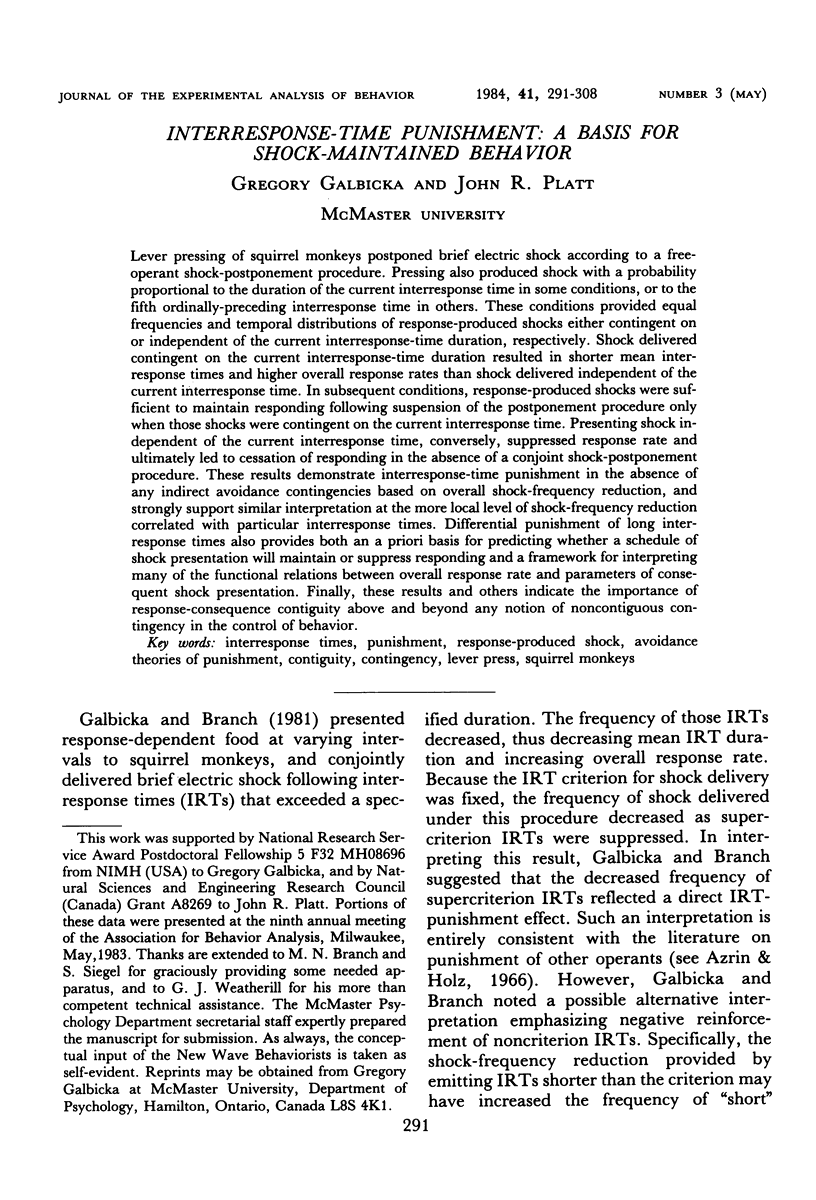
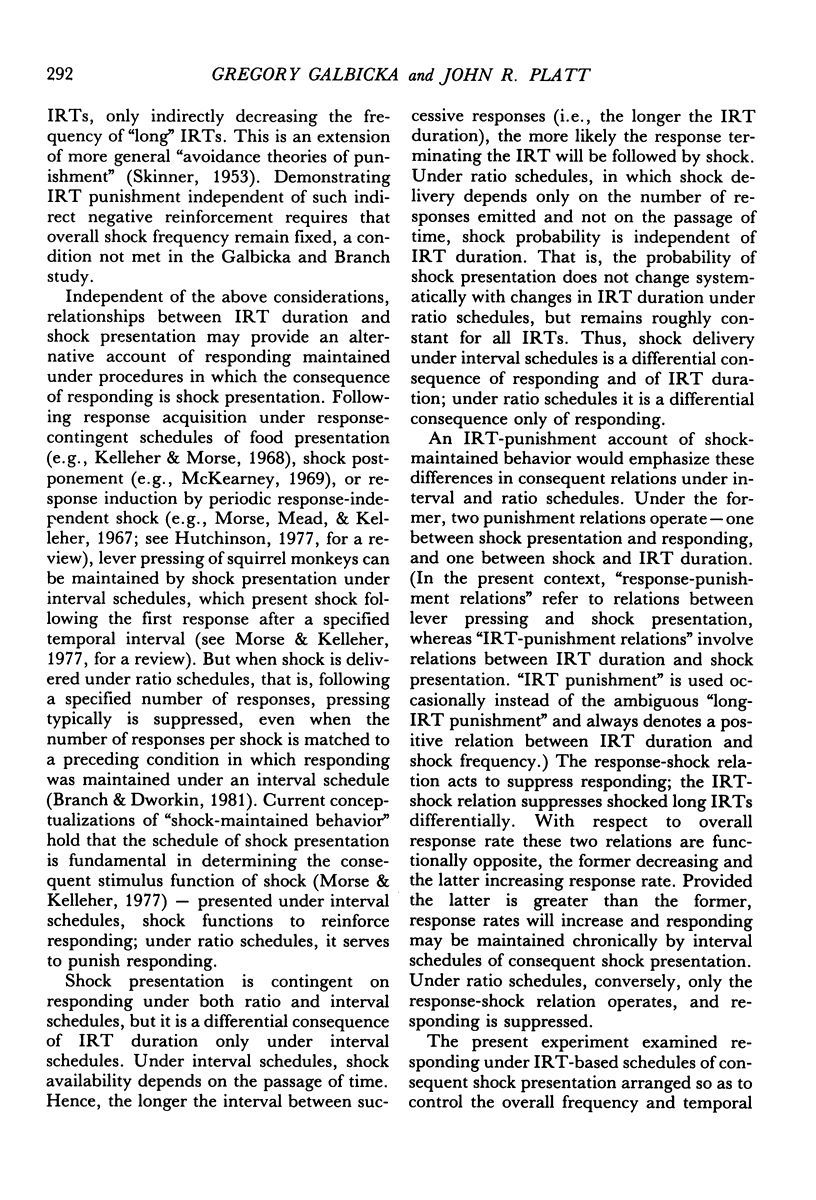
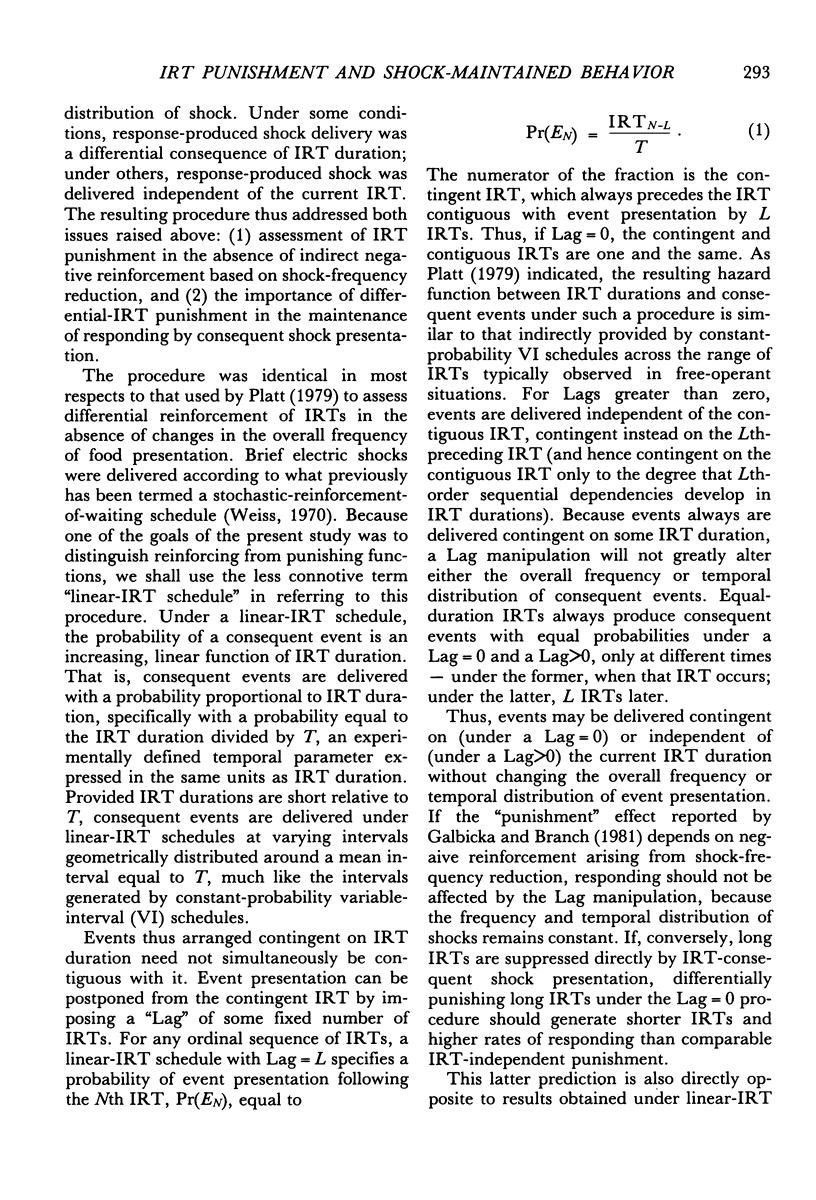
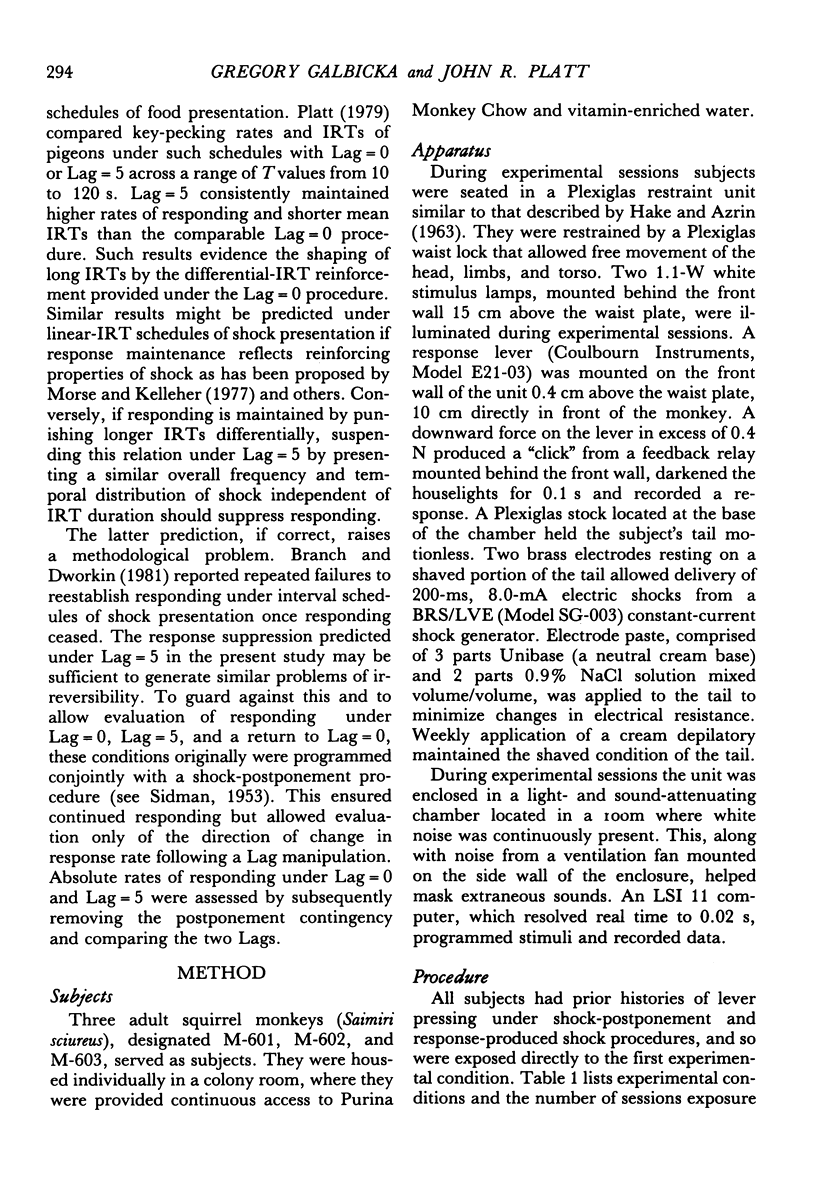
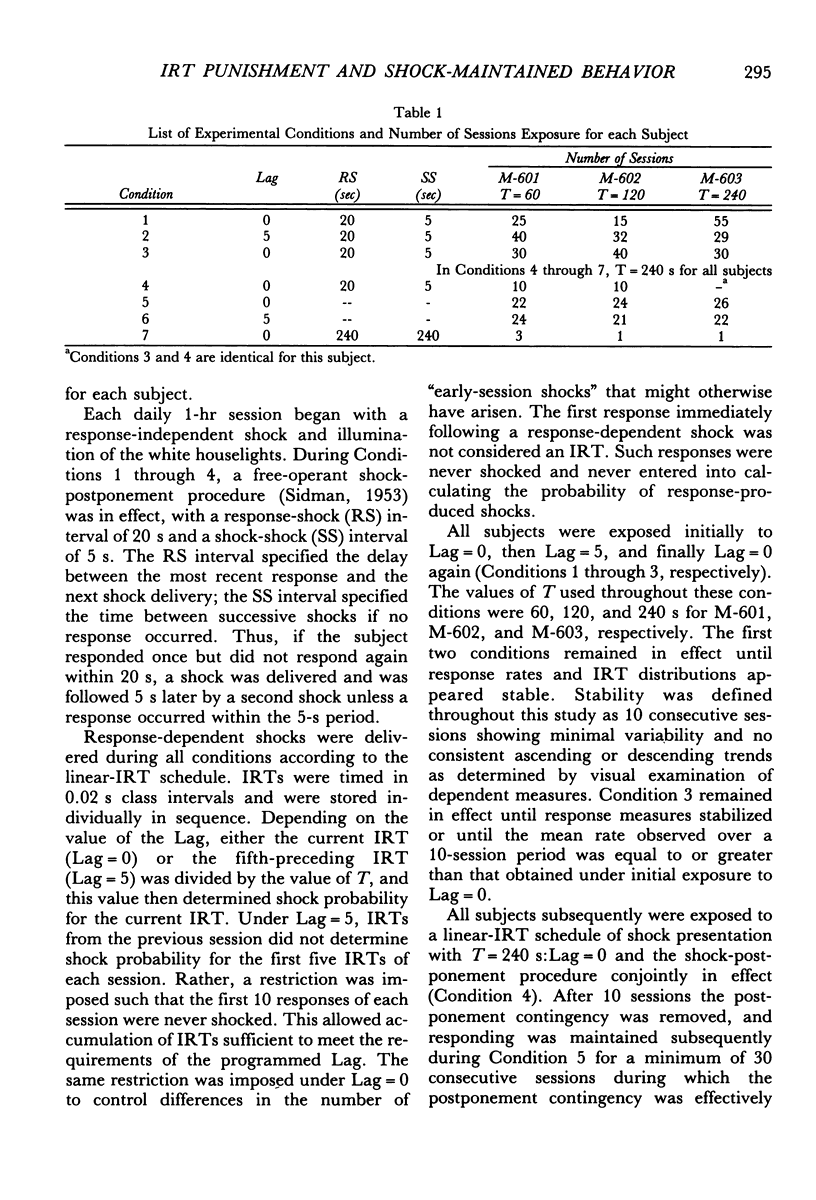
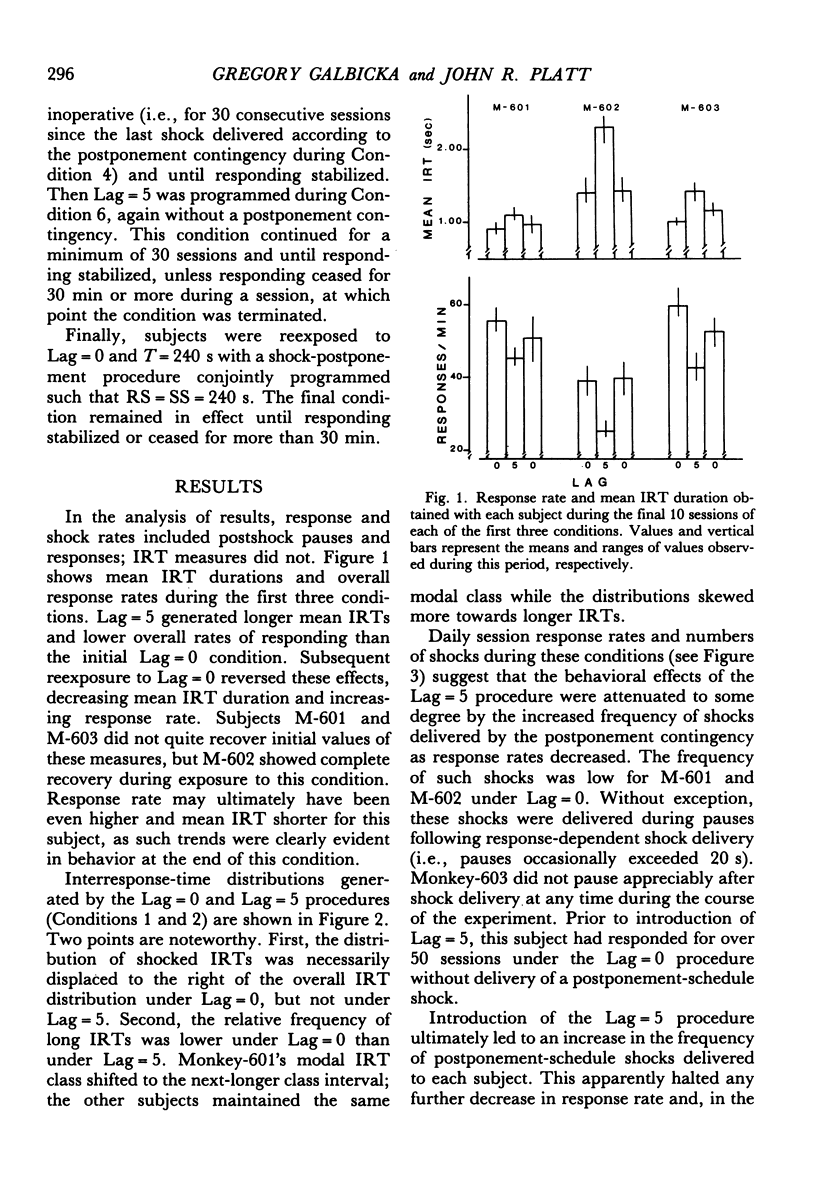
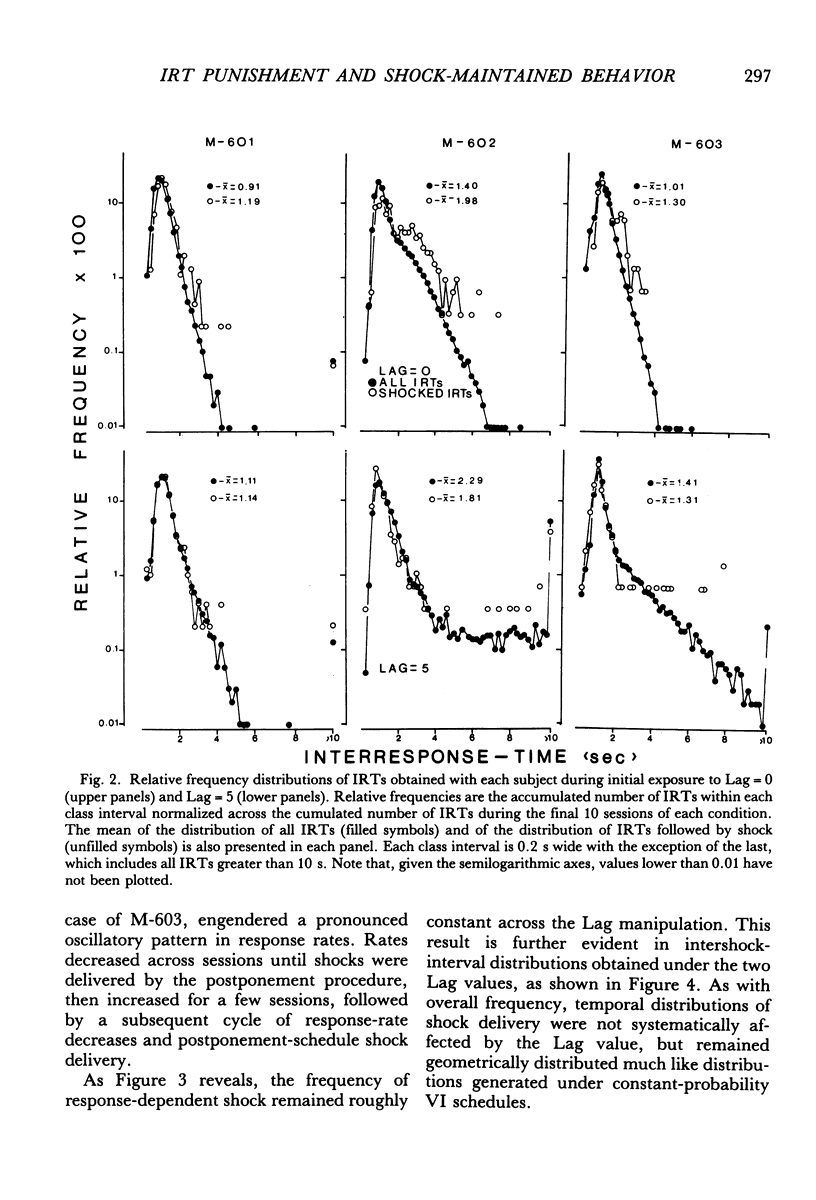
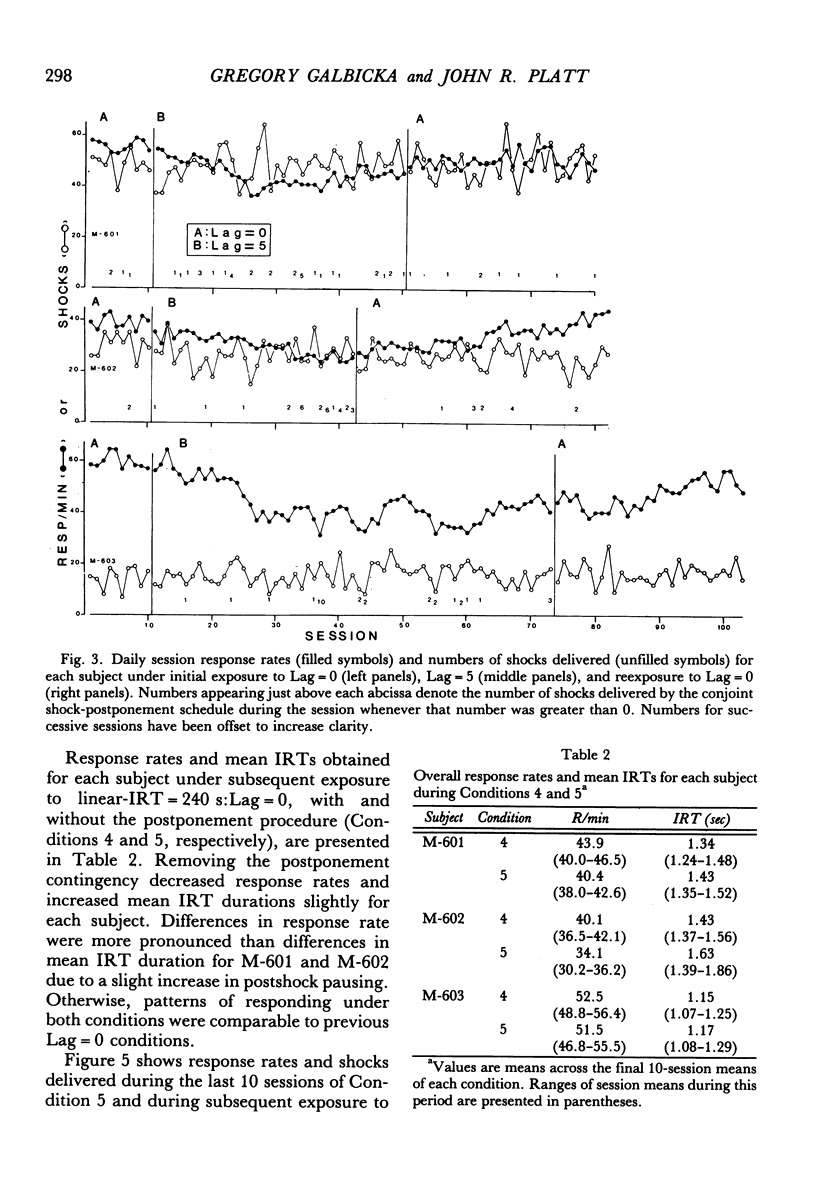
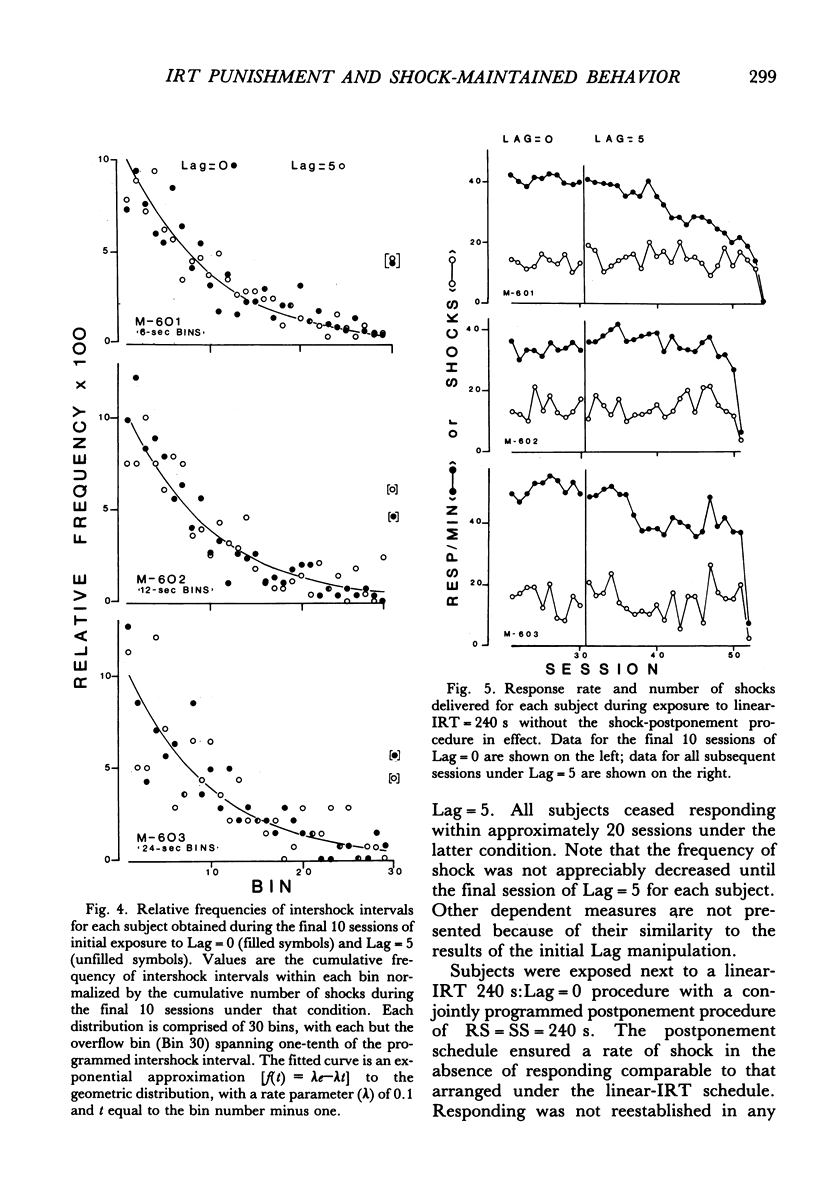
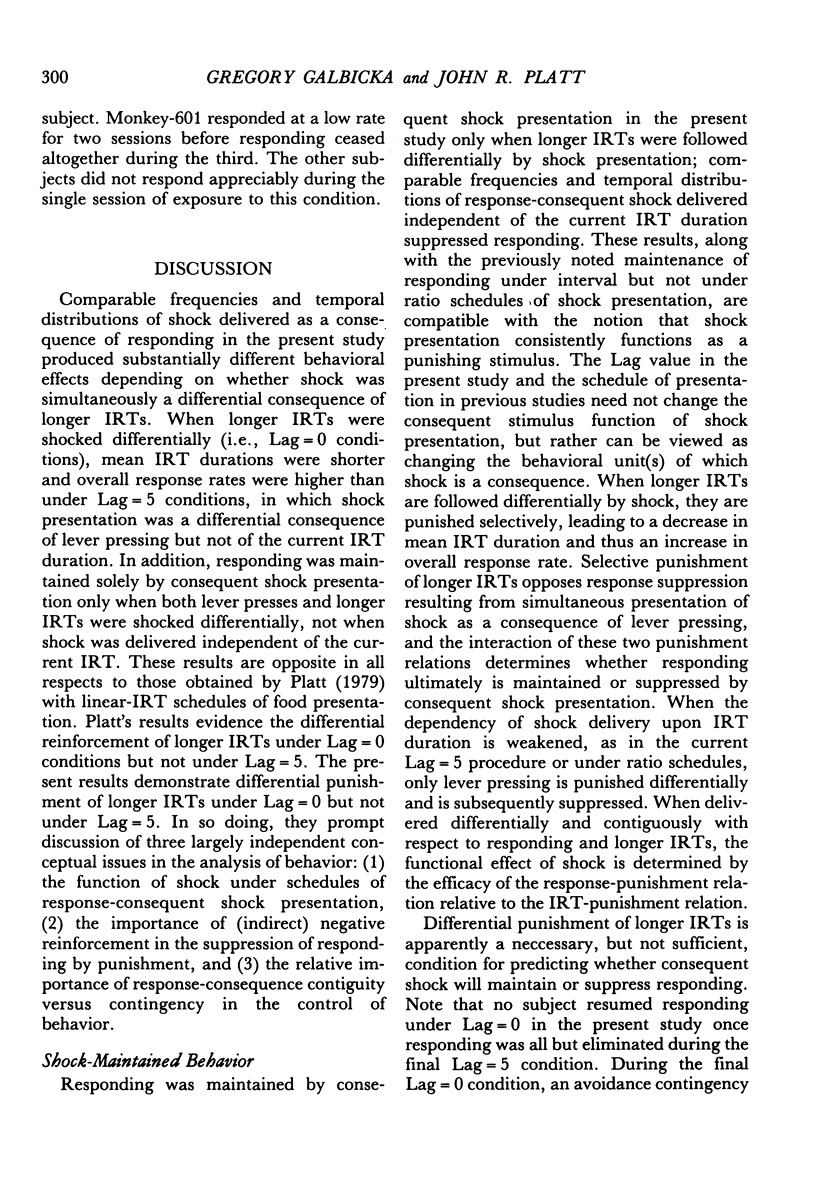
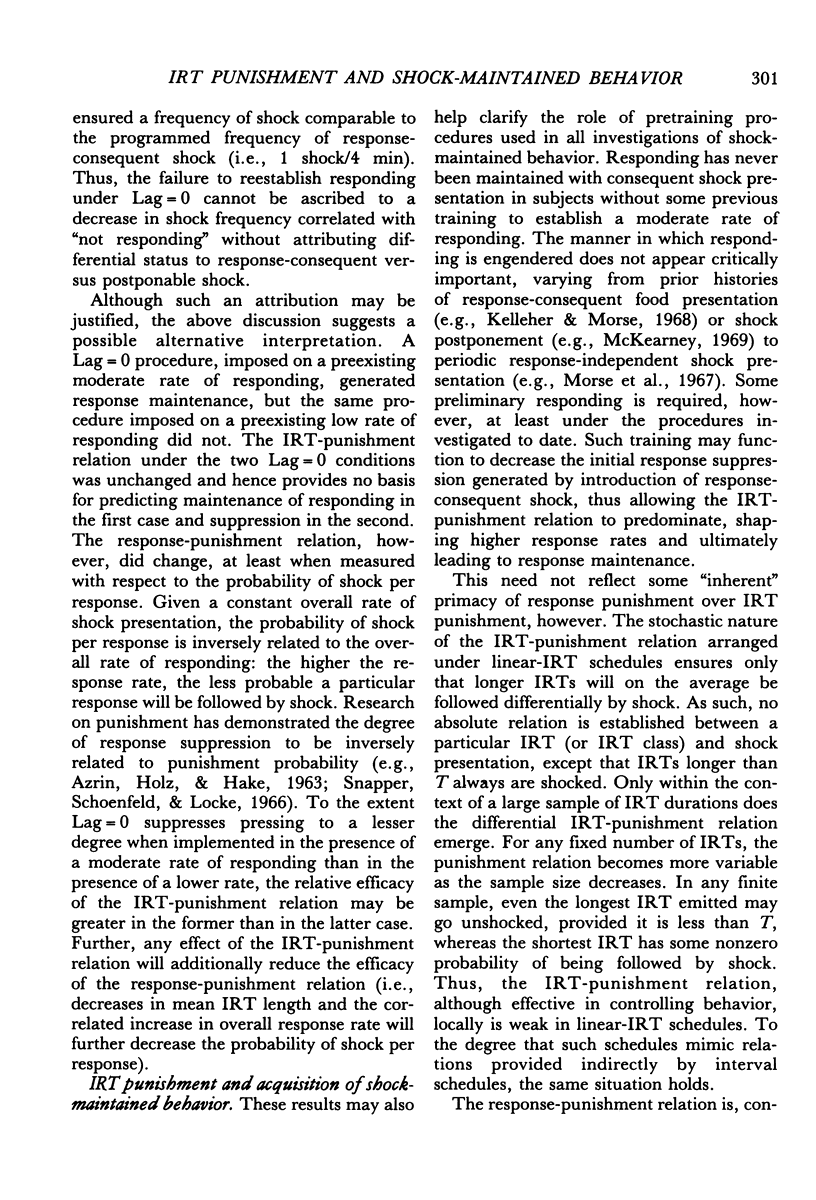
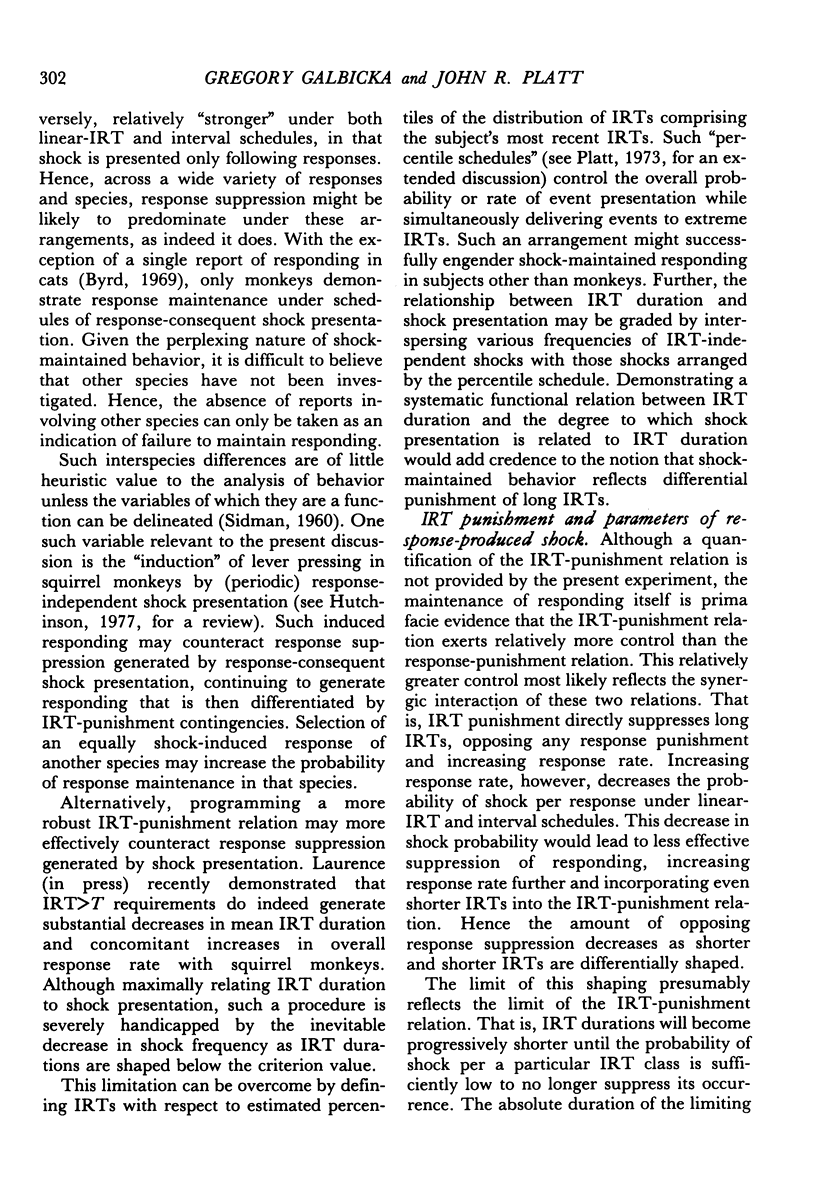
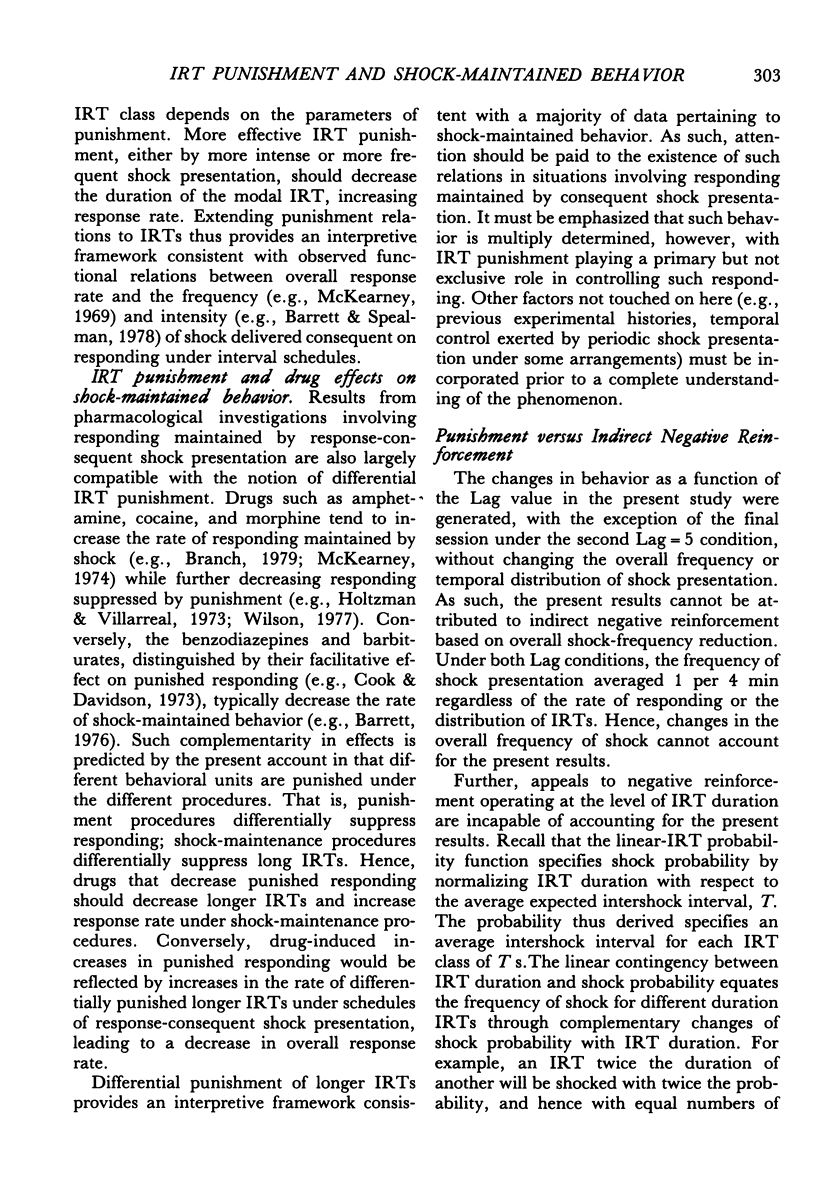
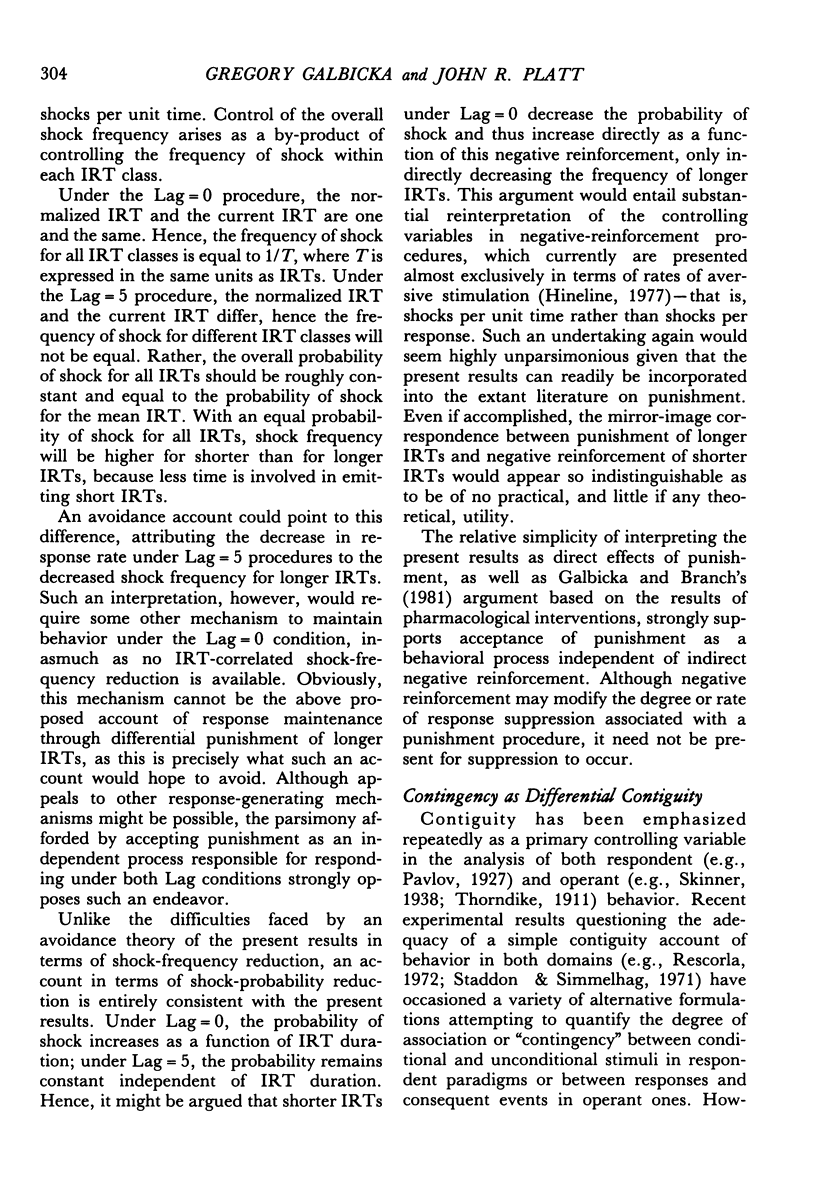
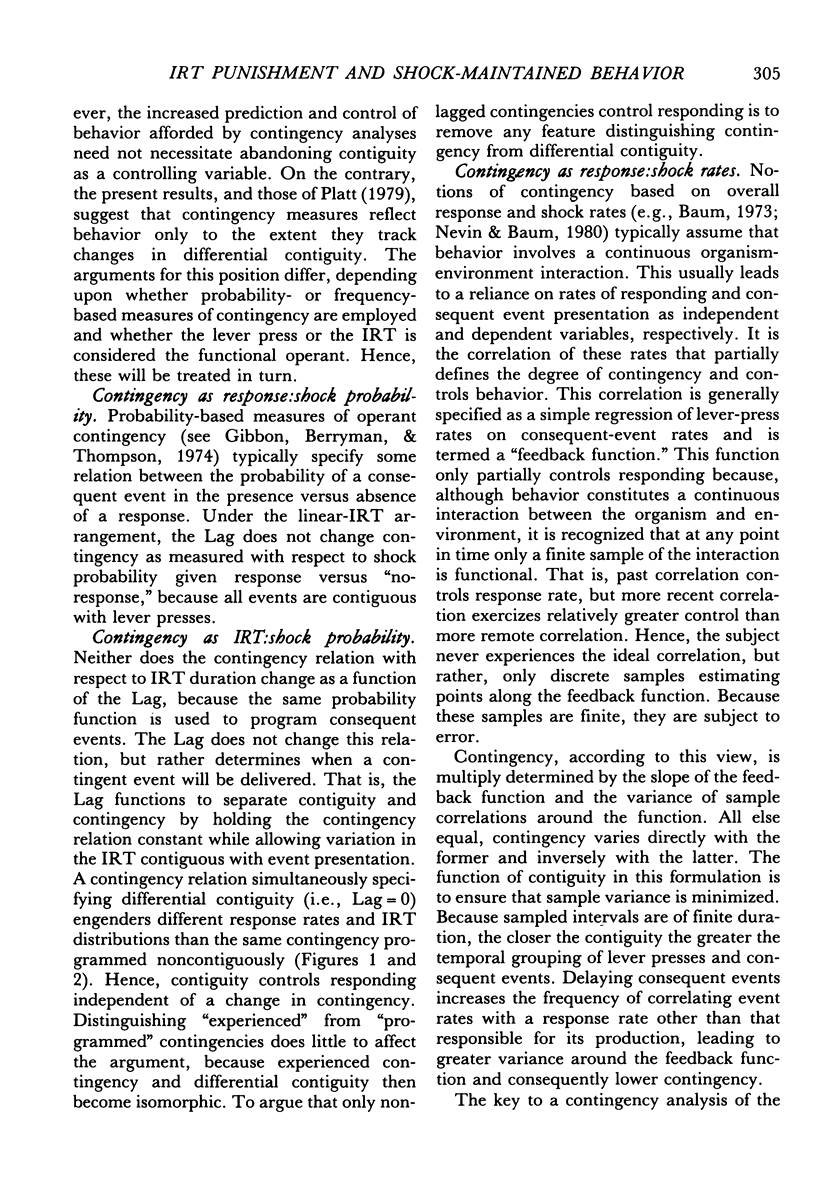
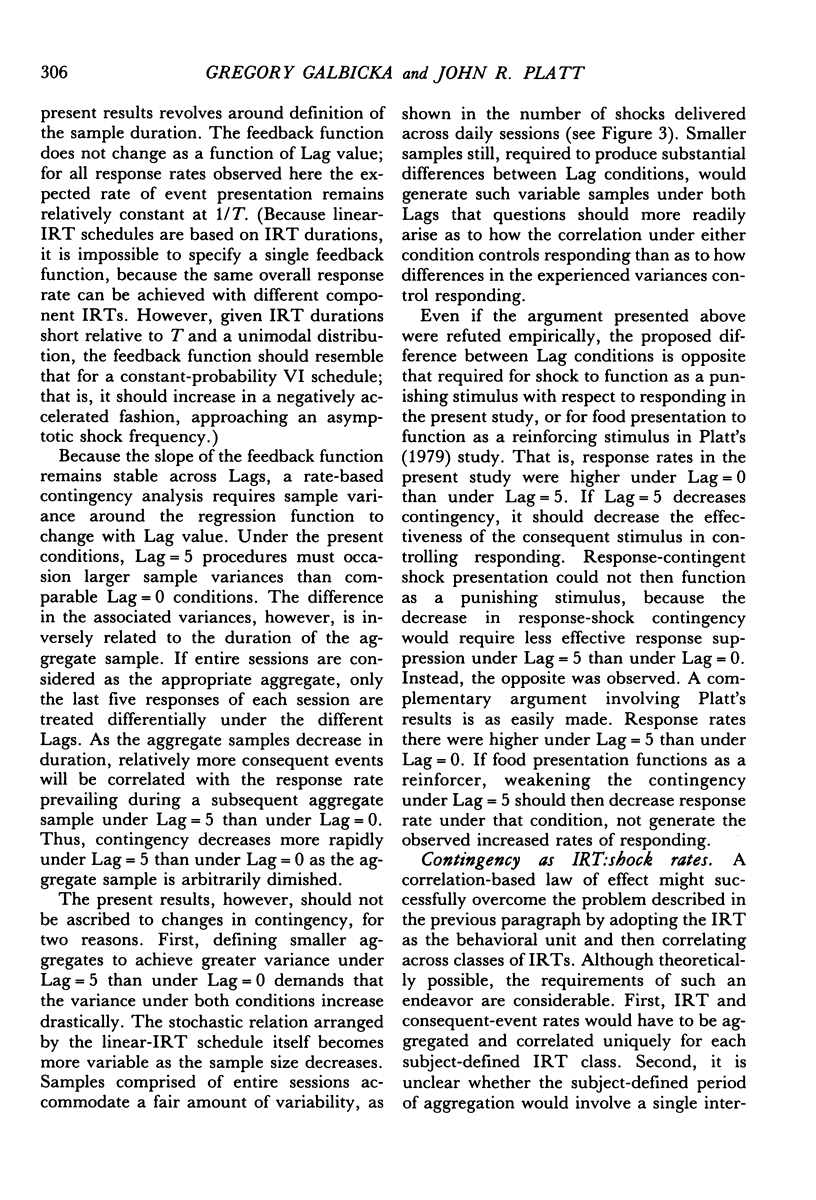

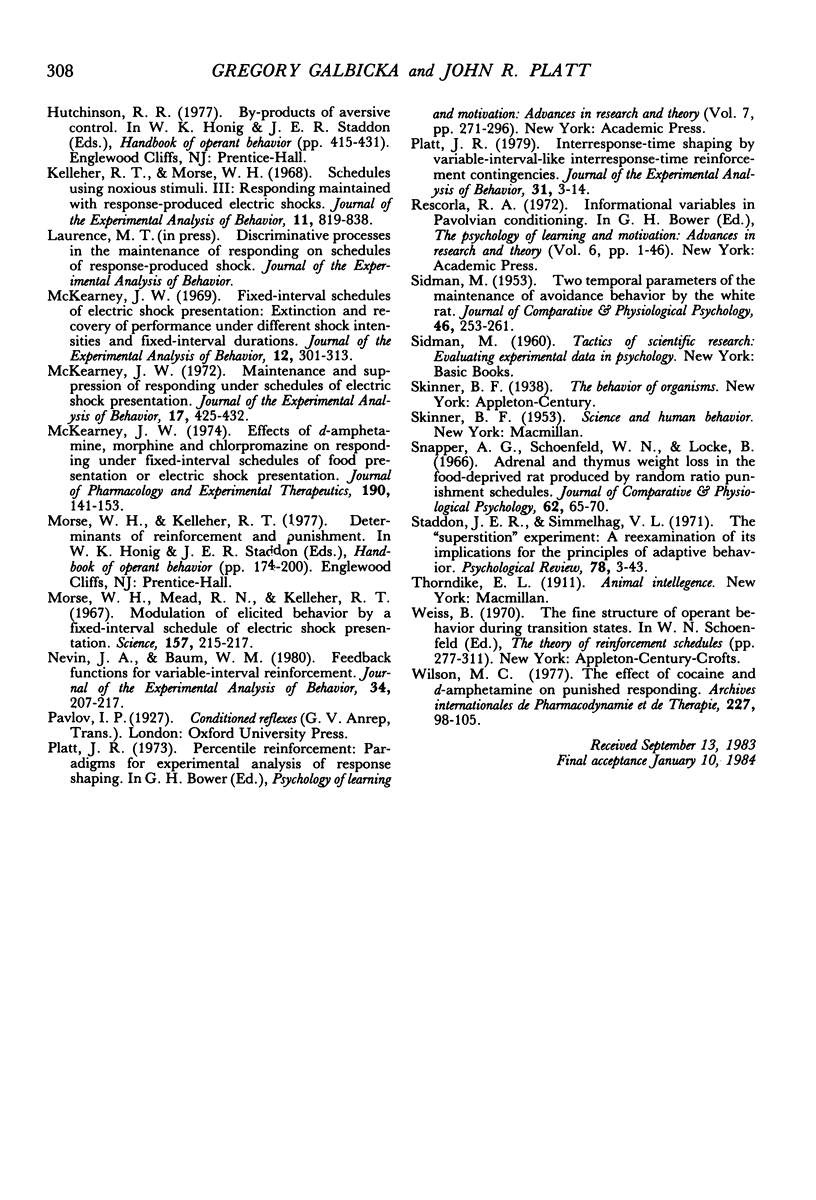
Selected References
These references are in PubMed. This may not be the complete list of references from this article.
- AZRIN N. H., HOLZ W. C., HAKE D. F. Fixed-ratio punishment. J Exp Anal Behav. 1963 Apr;6:141–148. doi: 10.1901/jeab.1963.6-141. [DOI] [PMC free article] [PubMed] [Google Scholar]
- Barrett J. E. Effects of alcohol, chlordiazepoxide, cocaine and pentobarbital on responding maintained under fixed-interval schedules of food or shock presentation. J Pharmacol Exp Ther. 1976 Mar;196(3):605–615. [PubMed] [Google Scholar]
- Barrett J. E., Spealman R. D. Behavior simultaneously maintained by both presentation and termination of noxious stimuli. J Exp Anal Behav. 1978 May;29(3):375–383. doi: 10.1901/jeab.1978.29-375. [DOI] [PMC free article] [PubMed] [Google Scholar]
- Baum W. M. The correlation-based law of effect. J Exp Anal Behav. 1973 Jul;20(1):137–153. doi: 10.1901/jeab.1973.20-137. [DOI] [PMC free article] [PubMed] [Google Scholar]
- Branch M. N. Consequent events as determinants of drug effects on schedule-controlled behavior: modification of effects of cocaine and d-amphetamine following chronic amphetamine administration. J Pharmacol Exp Ther. 1979 Sep;210(3):354–360. [PubMed] [Google Scholar]
- Branch M. N., Dworkin S. I. Effects of ratio contingencies on responding maintained by schedules of electric-shock presentation (response-produced shock). J Exp Anal Behav. 1981 Sep;36(2):191–205. doi: 10.1901/jeab.1981.36-191. [DOI] [PMC free article] [PubMed] [Google Scholar]
- Byrd L. D. Responding in the cat maintained under response-independent electric shock and response-produced electric shock. J Exp Anal Behav. 1969 Jan;12(1):1–10. doi: 10.1901/jeab.1969.12-1. [DOI] [PMC free article] [PubMed] [Google Scholar]
- Galbicka G., Branch M. N. Selective punishment of interresponse times. J Exp Anal Behav. 1981 May;35(3):311–322. doi: 10.1901/jeab.1981.35-311. [DOI] [PMC free article] [PubMed] [Google Scholar]
- Gibbon J., Berryman R., Thompson R. L. Contingency spaces and measures in classical and instrumental conditioning. J Exp Anal Behav. 1974 May;21(3):585–605. doi: 10.1901/jeab.1974.21-585. [DOI] [PMC free article] [PubMed] [Google Scholar]
- HAKE D. F., AZRIN N. H. An apparatus for delivering pain shock to monkevs. J Exp Anal Behav. 1963 Apr;6:297–298. doi: 10.1901/jeab.1963.6-297. [DOI] [PMC free article] [PubMed] [Google Scholar]
- Holtzman S. G., Villarreal J. E. Operant behavior in the morphine-dependent rhesus monkey. J Pharmacol Exp Ther. 1973 Mar;184(3):528–541. [PubMed] [Google Scholar]
- Kelleher R. T., Morse W. H. Schedules using noxious stimuli. III. Responding maintained with response-produced electric shocks. J Exp Anal Behav. 1968 Nov;11(6):819–838. doi: 10.1901/jeab.1968.11-819. [DOI] [PMC free article] [PubMed] [Google Scholar]
- McKearney J. W. Effects of d-amphetamine, morphine and chlorpromazine on responding under fixed-interval schedules of food presentation or electric shock presentation. J Pharmacol Exp Ther. 1974 Jul;190(1):141–153. [PubMed] [Google Scholar]
- McKearney J. W. Fixed-interval schedules of electric shock presentation: extinction and recovery of performance under different shock intensities and fixed-interval durations. J Exp Anal Behav. 1969 Mar;12(2):301–313. doi: 10.1901/jeab.1969.12-301. [DOI] [PMC free article] [PubMed] [Google Scholar]
- McKearney J. W. Maintenance and suppression of responding under schedules of electric shock presentation. J Exp Anal Behav. 1972 May;17(3):425–432. doi: 10.1901/jeab.1972.17-425. [DOI] [PMC free article] [PubMed] [Google Scholar]
- Morse W. H., Mead R. N., Kelleher R. T. Modulation of elicited behavior by a fixed-interval schedule of electric shock presentation. Science. 1967 Jul 14;157(3785):215–217. doi: 10.1126/science.157.3785.215. [DOI] [PubMed] [Google Scholar]
- Nevin J. A., Baum W. M. Feedback functions for variable-interval reinforcement. J Exp Anal Behav. 1980 Sep;34(2):207–217. doi: 10.1901/jeab.1980.34-207. [DOI] [PMC free article] [PubMed] [Google Scholar]
- Platt J. R. Interresponse-time shaping by variable-interval-like interresponse-time reinforcement contingencies. J Exp Anal Behav. 1979 Jan;31(1):3–14. doi: 10.1901/jeab.1979.31-3. [DOI] [PMC free article] [PubMed] [Google Scholar]
- SIDMAN M. Two temporal parameters of the maintenance of avoidance behavior by the white rat. J Comp Physiol Psychol. 1953 Aug;46(4):253–261. doi: 10.1037/h0060730. [DOI] [PubMed] [Google Scholar]
- Snapper A. G., Schoenfeld W. N., Locke B. Adrenal and thymus weight loss in the food-deprived rat produced by random ratio punishment schedules. J Comp Physiol Psychol. 1966 Aug;62(1):65–70. doi: 10.1037/h0023488. [DOI] [PubMed] [Google Scholar]
- Wilson M. C. The effect of cocaine and D-amphetamine on punished responding. Arch Int Pharmacodyn Ther. 1977 May;227(1):98–105. [PubMed] [Google Scholar]


